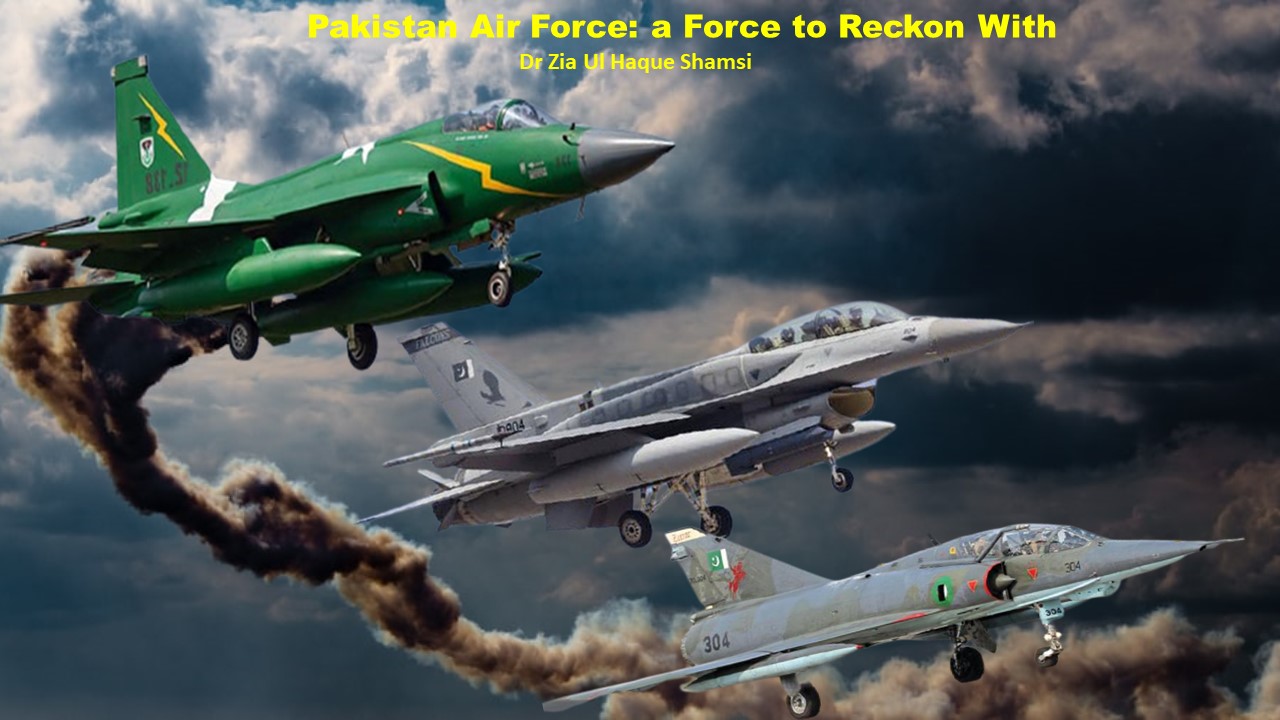The Founder of Pakistan, Quaid-i-Azam Mohammad Ali Jinnah, laid out a direction to build Pakistan Air Force (PAF) as an “efficient air force, second to none.” The great visionary had clearly stated, “A country without a strong Air Force is at the mercy of any aggressor. Pakistan must build up her Air Force as quickly as possible….”
The PAF has ever since followed Quaid’s dictum, and maintained high standards of professionalism alongside integrity and duty.
While airpower gained prominence as a dominant, and a winning force only after the Gulf War I, that too, when the Allied Forces had achieved air dominance in the first hundred hours of the one-sided war. The PAF had demonstrated a similar kind of assuming, and victorious lead role against a five-times bigger adversary, the Indian Air Force (IAF), in a 17-day all-out war in September 1965. PAF, being a tactical air force at that time, or even now, created strategic effects, and forced a much bigger IAF on the defensive even before the two ground forces clashed on September 6, 1965.
PAF has achieved and maintains a moral and psychological ascendency over the IAF since it overwhelmed the latter during the 1965 war. Despite being numerically superior, the IAF was unable to create an impression on the PAF, which outperformed it in the air as well as on the ground. The PAF prepared itself for the impending war. When the time came, it took the war into the enemy’s land, instead of waiting for its attacks. PAF’s air strategy was based on the concept of offensive defence, which IAF did not expect and, hence, paid the price. The IAF could not provide the much-needed air support to the Indian Army in its crucial battles of Chawinda and Chamb, which led to huge losses to its armoured formations, and the morale of the troops. Thus, the PAF’s presence in the skies raised the morale and confidence of the Pakistan Army; ensuring that their advances were not impeded by the IAF. This proved vital in winning important engagements in Sialkot and Lahore sectors.
The PAF’s offensive and attacking strategy paralysed the IAF. The same ascendency has continued over the decades. While the number game has continued to maintain a ratio of 1:4, the ground result has also not changed much. Whenever the PAF has engaged the IAF in air combat, it was able to achieve the first shot.
Over the years, the PAF has proved itself to be “second to none.” Right from its formation the PAF could maintain and progress as a force to reckon with–primarily due to its stringent standards in recruitment, training, merit-based promotion, staying abreast with the technological developments, and utmost operational preparedness. Moreover, the PAF leadership’s offensive mindset leads from the front. It believes that if airpower is not employed offensively, it cannot achieve favourable results. Although the airpower is technologically intensive (and numbers do matter), the PAF is always robust and efficient. Its meagre resources and concentrated mode of training and development has never obstructed its performance.
Be it the Swat operations against the home-grown–externally assisted–terrorism, the Waziristan operations (primarily due to the situation in Afghanistan), or the two-decades-long India’s hybrid war, the PAF has always proved to be a game-changer.
In fact, India’s Prime Minister Modi, after February 2019 events, accepted the superiority of the PAF, when he said that the results could have been different if Rafale were on the inventory of the IAF. The PAF shot down two-IAF fighter jets in aerial engagement on February 27, 2019, after they had attempted to enter Pakistan’s territory in Balakot, the night before. One of the downed Indian pilots, Wing Commander Abhinandan, landed in Pakistan’s part of Kashmir and was
captured by the locals. But Pakistani leadership showed grace and returned the Indian pilot after necessary documentation on humanitarian grounds as well as marginalising the probabilities of conflict escalation.
To ensure that it remains abreast with the evolving technologies and developments in the fields of Artificial Intelligence and Disruptive Technologies, the PAF is investing in both men and material. The PAF participates – and earns accolades – in operational exercises with more advanced air forces, including USAF, PLAAF, TuAF, KSAF, and QEAF.
The PAF is committed to maintaining excellence achieved in line with Quaid’s vision and the hard work through dedicated teamwork under its successive leadership to defend the aerial frontiers of Pakistan.
The writer is the author of a book ‘Nuclear Deterrence and Conflict Management between India and Pakistan’. He is presently working as Director, Centre for Aerospace & Security Studies (CASS).





